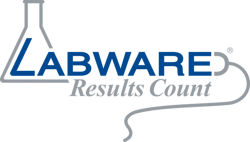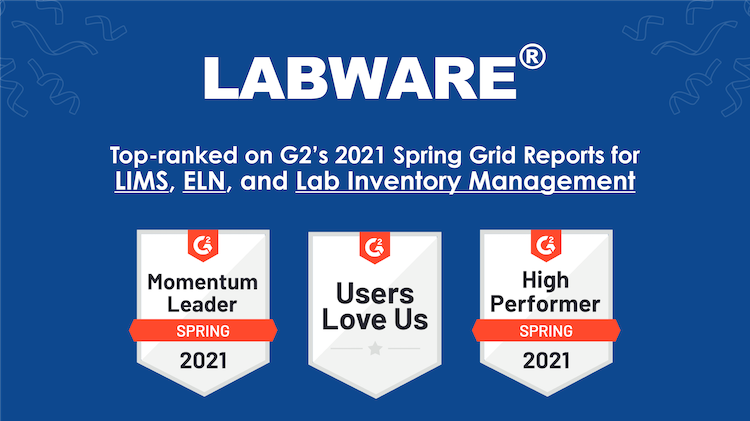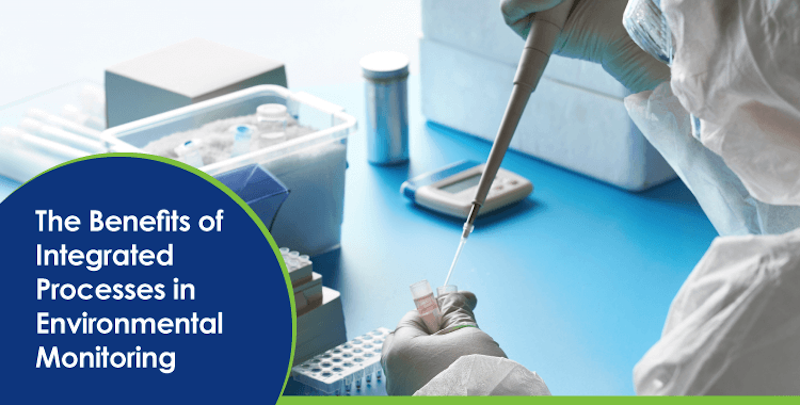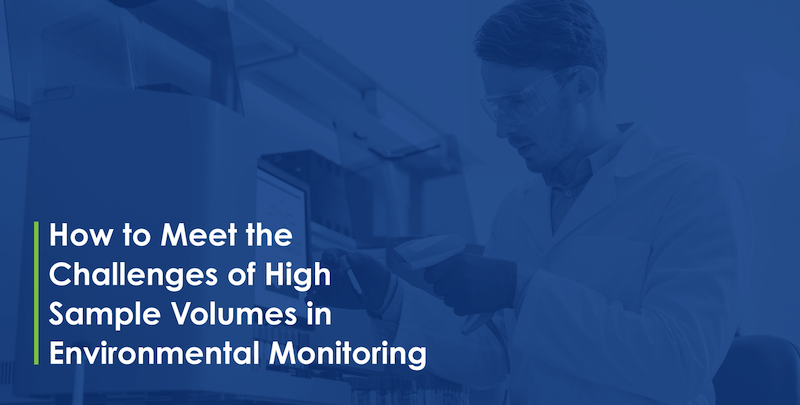
High volume environmental monitoring is a crucial aspect of ensuring compliance with regulatory requirements and maintaining product quality standards. However, managing large-scale sample analysis presents unique challenges that can impact laboratory efficiency and data integrity. In this blog post, we will explore the various hurdles faced by organizations dealing with high sample volumes in their environmental matrices.
We will discuss how implementing Laboratory Information Management Systems (LIMS) can streamline processes, optimize sampling plans for improved efficiency, and establish robust quality control measures. Additionally, we will delve into the importance of leveraging data analytics for informed decision making and providing ongoing training to staff members responsible for managing high volume environmental monitoring programs.
The Importance of Environmental Monitoring
Environmental monitoring is critical for industries to guarantee adherence with regulations and sustain the excellence of their products. It involves frequent testing at various points in the production process, allowing businesses to identify potential issues early on and implement corrective actions as needed. This essential practice helps companies stay ahead of potential problems while maintaining a strong reputation within their respective markets.
Compliance with Regulatory Requirements
To ensure public safety and resource preservation, many industries are legally mandated to undertake environmental monitoring. Regulatory standards exist to guard public wellbeing and conserve resources, stopping any hazardous pollutants from entering the environment or ending up in consumer goods. By conducting regular environmental tests using approved methods and adhering to strict guidelines set forth by regulatory agencies like the EPA or FDA, businesses can demonstrate their commitment to responsible practices while avoiding costly fines or penalties for noncompliance.
Maintaining Product Quality Standards
Beyond meeting legal requirements, environmental monitoring plays a critical role in preserving product quality across diverse sectors. For example, manufacturers must monitor air quality within cleanrooms used for producing sensitive electronic components; similarly, breweries need to test water sources regularly for impurities that could impact taste profiles during beer production processes (environmental matrices). In these cases and others alike, continuous vigilance ensures consistent outcomes over time leading ultimately towards increased customer satisfaction rates overall.
- Air Quality: Monitoring air quality is essential for industries like electronics manufacturing, where contaminants can damage sensitive components or lead to product failure.
- Water Quality: Ensuring water purity is crucial in sectors such as food and beverage production, where impurities can affect taste profiles or pose health risks to consumers.
- Soil Contamination: Industries that involve the use of hazardous materials must monitor soil conditions to prevent contamination and protect local ecosystems from harm.
In conclusion, environmental monitoring serves as a vital component within many business operations today. By staying vigilant about potential issues related to both regulatory compliance and overall product quality standards, companies will be better equipped towards achieving long-term success.
The significance of environmental tracking is immense, as it's vital for meeting regulatory criteria and keeping product excellence levels. Despite the challenges posed by high sample volume monitoring, Laboratory Information Management Systems (LIMS) can provide a viable solution for resource constraints, time limitations and data integrity issues.
Key Takeaway: Environmental monitoring is crucial for industries to ensure compliance with regulations and maintain the quality of their products. It involves frequent testing at various points in the production process, allowing businesses to identify potential issues early on and implement corrective actions as needed. By conducting regular environmental tests using approved methods, companies can demonstrate their commitment to responsible practices while avoiding costly fines or penalties for noncompliance.
Challenges Faced in High Sample Volume Monitoring
Managing high sample volumes in environmental monitoring can be challenging due to factors such as resource constraints, time limitations, and maintaining data integrity. These challenges require effective strategies for efficient sampling plans and accurate data analysis.
Resource Constraints Affecting Laboratory Capacity
Laboratories often face limited resources when dealing with large-scale environmental monitoring. This includes both physical resources like equipment and consumables, as well as human resources such as skilled technicians. As the volume of samples increases, it becomes more difficult to allocate these resources efficiently without compromising on quality or turnaround times. It is crucial for laboratories to invest in advanced technologies that can automate processes and improve overall productivity.
Time Limitations Impacting Turnaround Times
In addition to resource constraints, time limitations also pose a significant challenge when managing high sample volumes from various environmental matrices. With strict deadlines imposed by regulatory bodies or internal quality control requirements, labs must process samples quickly while ensuring accuracy. Balancing speed with precision requires careful planning of workflows and allocation of tasks among laboratory staff members.
Ensuring Data Integrity Amidst High Sample Volume
Maintaining data integrity is essential when handling large numbers of samples in environmental monitoring programs. Labs must implement rigorous protocols for tracking sample information throughout the entire testing process, from collection through analysis and reporting, to ensure that results are reliable and traceable back to their original source materials (e.g., soil, waste, air, or water samples). This includes accurate labeling, secure storage, and proper documentation of all sample-related data.
Strategies for Overcoming High Sample Volume Challenges
- Automation: Implementing Laboratory Information Management Systems (LIMS) can help automate many aspects of the sampling process, reducing manual labor and minimizing human error.
- Prioritization: Focusing on critical sampling points that have a higher potential for contamination or regulatory non-compliance can optimize resource allocation without sacrificing overall monitoring effectiveness.
- Data Analytics: Leveraging advanced analytics tools to identify trends in sample results enables labs to make informed decisions about their environmental monitoring programs and adjust strategies as needed.
- Ongoing Training: Ensuring laboratory staff are well-trained in handling high sample volumes is crucial for maintaining the quality of testing processes. Providing ongoing training opportunities helps employees stay up-to-date with industry best practices while enhancing their skills and knowledge within this field.
High sample volume monitoring poses a number of challenges that can be difficult to overcome, such as resource constraints and time limitations. Fortunately, implementing LIMS systems can help alleviate these issues by providing automated scheduling capabilities, improved data tracking accuracy, and comprehensive reporting solutions.
Key Takeaway: Managing high sample volumes in environmental monitoring is challenging due to resource constraints, time limitations, and maintaining data integrity. Strategies such as automation through LIMS implementation, prioritization of critical sampling points, leveraging advanced analytics tools for data analysis and providing ongoing training opportunities can help overcome these challenges while ensuring accurate results.
Implementing Laboratory Information Management Systems (LIMS)
Environmental monitoring is a critical aspect of many industries, and managing high sample volumes can be challenging. A LIMS is an effective solution for managing high sample volumes, automating processes such as scheduling samples, tracking results, generating reports and ensuring compliance with industry-specific regulations. A LIMS helps manage high sample volumes by automating processes like scheduling samples, tracking results, generating reports, and ensuring compliance with industry-specific regulations. This technology enables laboratories to scale up operations while maintaining efficiency and accuracy.
Automation of Scheduling Samples
A key benefit of implementing a LIMS in environmental monitoring programs is the automation it provides for scheduling samples. By automating this process, labs can ensure that all required testing locations are covered without manual intervention or oversight. This not only saves time but also reduces human error in data entry and management tasks associated with environmental matrices.
Tracking Results Effectively
Laboratories dealing with high sample volumes need an efficient system for tracking test results across various stages of analysis. A LIMS allows users to easily track progress on individual samples as well as monitor overall trends within their environmental monitoring program. Furthermore, real-time access to these insights enables lab managers to make informed decisions about resource allocation and workload distribution among staff members.
Generating Comprehensive Reports
- Data visualization: With advanced reporting capabilities offered by modern LIMS solutions, labs can generate visual representations of their data, such as graphs or charts, which help identify patterns more quickly than traditional spreadsheets or tables.
- Trend analysis: Labs can use LIMS-generated reports to analyze trends in their environmental monitoring data, helping them identify potential areas of concern and implement corrective actions as needed.
- Regulatory compliance: A LIMS can generate customized reports that adhere to specific regulatory requirements, ensuring that labs maintain compliance with industry standards while also streamlining the reporting process for audit purposes.
Incorporating a Laboratory Information Management System into your high volume environmental monitoring program can significantly improve efficiency and accuracy. By automating sample scheduling, effectively tracking results, and generating comprehensive reports tailored to your needs, a LIMS implementation will help you stay ahead of the curve in managing large-scale environmental testing projects. To learn more about how LabWare's LIMS solutions can benefit your organization's environmental monitoring efforts, visit our Environmental Industry Solutions page.
The integration of Laboratory Information Management Systems (LIMS) offers organizations the potential to streamline their laboratory operations, ensuring accuracy and effectiveness. By streamlining sampling plans for optimal efficiency, businesses will be able to maximize the value of their resources while reducing costs associated with data collection.
Key Takeaway: Implementing a Laboratory Information Management System (LIMS) can help manage high sample volumes in environmental monitoring by automating processes like scheduling samples, tracking results, and generating reports. With a LIMS implementation, labs can improve efficiency and accuracy while maintaining compliance with industry-specific regulations.
Streamlining Sampling Plans for Optimal Efficiency
Meeting the demands of high sample volumes in environmental monitoring without compromising on quality or timeliness requires a streamlined sampling plan. By carefully planning and taking into account available resources within a lab setting, businesses can efficiently manage collection schedules and ensure proper coverage across all required testing locations.
Prioritizing Critical Sampling Points
To optimize efficiency, it is essential to prioritize critical sampling points based on factors such as regulatory requirements, potential risks to product quality, and historical data trends. By focusing on these crucial areas first, laboratories can allocate their resources more effectively while still maintaining compliance with environmental regulations. Moreover, this strategy facilitates the detection of possible issues early in production to enable quick corrective measures.
Balancing Workload Distribution Among Staff Members
A key aspect of streamlining sampling plans involves balancing workload distribution among laboratory staff members. This ensures that no single employee becomes overwhelmed by an excessive number of samples while others have less work to do. Achieving equilibrium in the workload can not only optimize efficiency but also diminish the danger of mistakes due to exhaustion or burnout. Some strategies for achieving this balance include:
- Rotating tasks among team members regularly.
- Scheduling breaks between high-volume periods.
- Cross-training employees in multiple roles to increase flexibility during peak times.
- Utilizing automated systems like LIMS (Laboratory Information Management Systems) where possible to reduce manual labor requirements.
In addition to these strategies, continuous improvement initiatives should be implemented within labs handling large-scale environmental monitoring programs. These may involve evaluating current processes for inefficiencies and identifying opportunities for improvement, such as implementing new technologies or refining existing procedures.
By streamlining sampling plans and balancing workload distribution among staff members, laboratories can better manage high sample volumes in environmental monitoring. This not only ensures compliance with industry regulations but also maintains the quality of testing processes and results. Furthermore, leveraging LIMS technology allows businesses to scale up operations while maintaining efficiency and accuracy across various environmental matrices.
By streamlining sampling plans, laboratories can optimize their efficiency and reduce costs. Quality control measures are essential for ensuring accuracy of high sample volumes; the next section outlines important steps to ensure successful data collection.
Key Takeaway: To efficiently manage high sample volumes in environmental monitoring, laboratories should prioritize critical sampling points, balance workload distribution among staff members, and continuously improve their processes. By streamlining sampling plans and leveraging LIMS technology, businesses can maintain compliance with industry regulations while ensuring the quality of testing processes and results.
Quality Control Measures for High Sample Volumes
Laboratories must have robust quality control measures in place when dealing with large numbers of samples from environmental monitoring programs. By following strict protocols regarding instrument calibration checks and maintenance routines, along with adherence to standard operating procedures (SOPs), labs can minimize errors during analysis stages, leading ultimately towards more reliable outcomes overall.
Instrument Calibration and Maintenance
To ensure accurate results, it is essential that all instruments used in the testing process are properly calibrated and maintained. This includes regularly scheduled calibration checks, which verify that an instrument's measurements are within acceptable limits as defined by industry standards or regulatory requirements. Additionally, routine maintenance should be performed on equipment to prevent malfunctions or breakdowns that could compromise data integrity.
- Regular calibration: Schedule periodic calibrations according to manufacturer recommendations or regulatory guidelines.
- Maintenance: Implement a preventive maintenance program for all laboratory equipment to avoid unexpected downtime due to malfunctioning instruments.
Adherence to Standard Operating Procedures (SOPs)
In addition to proper instrument care, laboratories must also adhere strictly to established SOPs throughout the entire sample handling and analysis process. These documented procedures outline best practices for various tasks such as sample collection, preparation, storage, transportation, and analysis - ensuring consistency across multiple analysts while reducing potential sources of error or contamination.
- Create comprehensive SOPs: Develop detailed written instructions covering every aspect of your environmental monitoring processes - from sampling techniques through final report generation - based on industry best practices and regulatory requirements.
- Train staff on SOPs: Ensure all laboratory personnel are thoroughly trained in the proper execution of each SOP, and provide ongoing refresher courses to maintain proficiency levels.
- Audit adherence to SOPs: Regularly review and assess your lab's compliance with established procedures through internal audits or third-party assessments. This will help identify areas for improvement and prevent deviations from best practices that could impact data quality.
Incorporating these quality control measures into your high volume environmental monitoring program not only safeguards the integrity of your results but also demonstrates a commitment to excellence within the industry. By prioritizing instrument calibration, maintenance routines, and strict adherence to SOPs, laboratories can confidently manage large-scale sample volumes while maintaining accuracy and reliability in their testing processes.
To ensure the accuracy of results, it is essential to implement quality control measures for high sample volumes. Leveraging data analytics can help identify trends and patterns in order to optimize sampling strategies based on these insights, thus improving decision making capabilities.
Key Takeaway: To ensure reliable outcomes, laboratories must implement robust quality control measures for high volume environmental monitoring programs. This includes regular instrument calibration checks and maintenance routines, as well as strict adherence to standard operating procedures (SOPs) throughout the entire sample handling and analysis process. By prioritizing these measures, labs can confidently manage large-scale sample volumes while maintaining accuracy and reliability in their testing processes.
Leveraging Data Analytics for Improved Decision Making
By utilizing data analytics, laboratories can make informed decisions about their environmental monitoring programs. Analyzing trends in sample results allows labs to identify potential areas of concern, optimize sampling plans, and improve overall efficiency. In this section, we will discuss the importance of identifying trends and patterns as well as optimizing sampling strategies based on data insights.
Identifying Trends and Patterns
One key aspect of managing high volume environmental monitoring is understanding the underlying trends within the collected data. This involves analyzing various statistical methods to detect changes or anomalies that may indicate a problem with production processes or equipment. For example, an increase in contaminants at specific testing locations could suggest issues with waste management practices or filtration systems.
- Data visualization: Utilizing graphical representations such as charts and graphs can help laboratory staff quickly identify patterns in large datasets.
- Trend analysis: Applying statistical techniques like regression analysis helps determine whether observed changes are significant over time.
- Anomaly detection: Identifying outliers within the dataset can reveal unexpected events requiring further investigation.
Optimizing Sampling Strategies Based on Data Insights
In addition to identifying trends and patterns, leveraging data analytics also enables laboratories to optimize their sampling strategies for improved efficiency. By examining historical data from previous tests alongside real-time information gathered during ongoing monitoring efforts, lab managers can adjust collection schedules according to current needs while still maintaining compliance with regulatory requirements.
Some ways that labs might use these insights include:
- Adjusting sample frequency: Based on the analysis of past results, labs can determine if certain testing locations require more frequent sampling or if resources can be reallocated to other areas.
- Refining collection methods: Data-driven insights may reveal opportunities for improving sample collection techniques, such as using alternative equipment or adjusting protocols to minimize contamination risks.
- Prioritizing critical points: By identifying trends in environmental monitoring and potential problem areas, lab managers can prioritize which sampling points are most crucial for maintaining product quality and regulatory compliance.
In conclusion, leveraging data analytics is a powerful tool that allows laboratories managing high volume environmental monitoring programs to make informed decisions about their operations. By identifying trends and patterns within collected data while optimizing sampling strategies based on these insights, labs can improve overall efficiency without compromising the integrity of their results.
By leveraging data analytics, decision makers can identify trends and patterns to optimize sampling strategies for improved environmental monitoring. Training staff with the necessary skills is key in managing high sample volumes efficiently; thus, ongoing professional development opportunities are essential for success.
Key Takeaway: By utilizing data analytics, laboratories can improve their environmental monitoring programs by identifying trends and patterns in sample results to optimize sampling strategies. This allows lab managers to adjust collection schedules according to current needs while still maintaining compliance with regulatory requirements, prioritize critical points for maintaining product quality and regulatory compliance, and refine collection methods using alternative equipment or adjusting protocols.
Training Staff for High Sample Volume Management
Ensuring that laboratory staff are well-trained in handling high sample volumes is crucial for maintaining the quality of testing processes. Providing ongoing training opportunities helps employees stay up-to-date with industry best practices while enhancing their skills and knowledge within this field. In this section, we will discuss the importance of continuous professional development and how to enhance skill sets specific to managing large-scale environmental monitoring.
Ongoing Professional Development Opportunities
Laboratories dealing with high volume environmental monitoring must prioritize the ongoing professional development of their staff members. This can be achieved through various methods such as attending conferences, participating in workshops, enrolling in relevant courses or certifications, and staying informed about new developments in environmental matrix analysis techniques. By investing time and resources into employee growth, laboratories can ensure they have a skilled workforce capable of adapting to changes within the industry.
- Conferences: Attending national or international conferences related to environmental monitoring allows lab personnel to network with peers, learn from experts' presentations, and discover innovative solutions for managing high sample volumes.
- Workshops: Participating in hands-on workshops provides practical experience using advanced equipment or software tools designed specifically for handling large amounts of data generated during extensive sampling campaigns.
- Courses & Certifications: Enrolling staff members into specialized courses focused on topics like Laboratory Information Management Systems (LIMS) implementation or statistical analysis techniques equips them with valuable knowledge directly applicable to their daily tasks when working on high-volume projects.
Enhancing Skill Sets Specific to Managing Large-Scale Environmental Monitoring
In addition to general professional development, it is essential for laboratory staff to acquire skills tailored specifically towards managing high sample volumes in environmental monitoring programs. Some key areas of focus include:
- Time Management: Efficiently organizing and prioritizing tasks is crucial when dealing with large numbers of samples. Staff members should be trained on how to allocate their time effectively across various responsibilities within the lab.
- Data Analysis Techniques: As the volume of data generated during environmental monitoring increases, so does the need for advanced analytical methods. Training staff in statistical analysis techniques or specialized software tools can help them identify trends and patterns more easily, leading to better decision-making.
- LIMS Expertise: Becoming proficient in using a Laboratory Information Management System (LIMS) allows employees to automate processes like scheduling samples, tracking results, generating reports, and ensuring compliance with industry-specific regulations - all vital aspects when handling high sample volumes.
In conclusion, continuous professional development is essential for laboratory staff to manage high volume environmental monitoring effectively. By investing in training opportunities and enhancing skill sets specific to managing large-scale environmental monitoring, laboratories can ensure they have a skilled workforce capable of adapting to changes within the industry.
Key Takeaway: To effectively manage high sample volumes in environmental monitoring, laboratories must prioritize ongoing professional development for their staff. This can be achieved through attending conferences, participating in workshops and enrolling in relevant courses or certifications to enhance skills specific to managing large-scale environmental monitoring such as time management, data analysis techniques and LIMS expertise. By investing in employee growth, labs can ensure they have a skilled workforce capable of adapting to changes within the industry.
FAQs in Relation to High Volume Environmental Monitoring
What are the 4 types of environmental monitoring?
Environmental monitoring involves measuring various aspects of the environment to assess its quality and identify potential issues. The four main types include:
- Air Quality Monitoring: Measures air pollutants, such as particulate matter and gaseous emissions.
- Water Quality Monitoring: Assesses physical, chemical, and biological parameters in water bodies.
- Soil Quality Monitoring: Evaluates soil properties like nutrient content, pH levels, and contaminants.
- Ecosystem/Biodiversity Monitoring: Observes changes in ecosystems or species populations over time.
What are the 4 types of environmental monitoring in the pharma industry?
In the pharmaceutical industry, environmental monitoring focuses on ensuring product safety by maintaining a clean manufacturing environment. The four primary categories include:
- Airborne Particle Counting: Monitors airborne particles within controlled environments like cleanrooms.
- Microbial Contamination Testing: Detects microorganisms on surfaces or in air samples using culture-based methods or rapid detection techniques.
- Temperature & Humidity Control: Ensures optimal conditions for storage and production processes to prevent contamination risks.
- Cleaning Validation & Disinfection Efficacy Studies: Verifies effectiveness of cleaning procedures to remove residues from equipment surfaces after manufacturing operations.
What are the five areas of environmental monitoring?
The five key areas that encompass comprehensive environmental monitoring efforts consist of:
- Air Quality: Assessing pollutant concentrations, emission sources, meteorological factors affecting dispersion patterns, etc.
- Water Resources: Examining surface water/groundwater availability, pollution levels, aquatic life health indicators, etc.
- Soil & Land Use: Analyzing soil properties, land degradation processes, agricultural productivity potential, etc.
- Ecosystems & Biodiversity: Monitoring species populations, habitat conditions, and ecosystem dynamics.
- Climate Change: Observing long-term trends in temperature, precipitation patterns, sea-level rise, and other climate-related variables.
How does environmental monitoring help the environment?
Environmental monitoring helps protect the environment by:
- Detecting pollution sources early to prevent further damage or contamination.
- Providing data for informed decision-making regarding resource management and conservation efforts.
- Evaluating effectiveness of policies or regulations aimed at reducing environmental impacts.
- Identifying trends that may signal emerging threats to ecosystems or human health.
Conclusion
However, it comes with its own set of challenges such as resource constraints affecting laboratory capacity and ensuring data integrity amidst high sample volume. Implementing Laboratory Information Management Systems (LIMS), streamlining sampling plans, quality control measures, leveraging data analytics, and training staff are all key components to successfully manage high sample volumes.
At LabWare, we understand the importance of accurate and efficient environmental monitoring. That's why we offer state-of-the-art LIMS solutions that can help streamline your lab processes while ensuring data accuracy and security. Reach out now to discover how our services can improve your business!
Contact us today to learn more about how our LIMS solutions can help you efficiently manage high volume environmental monitoring and environmental matrices.
